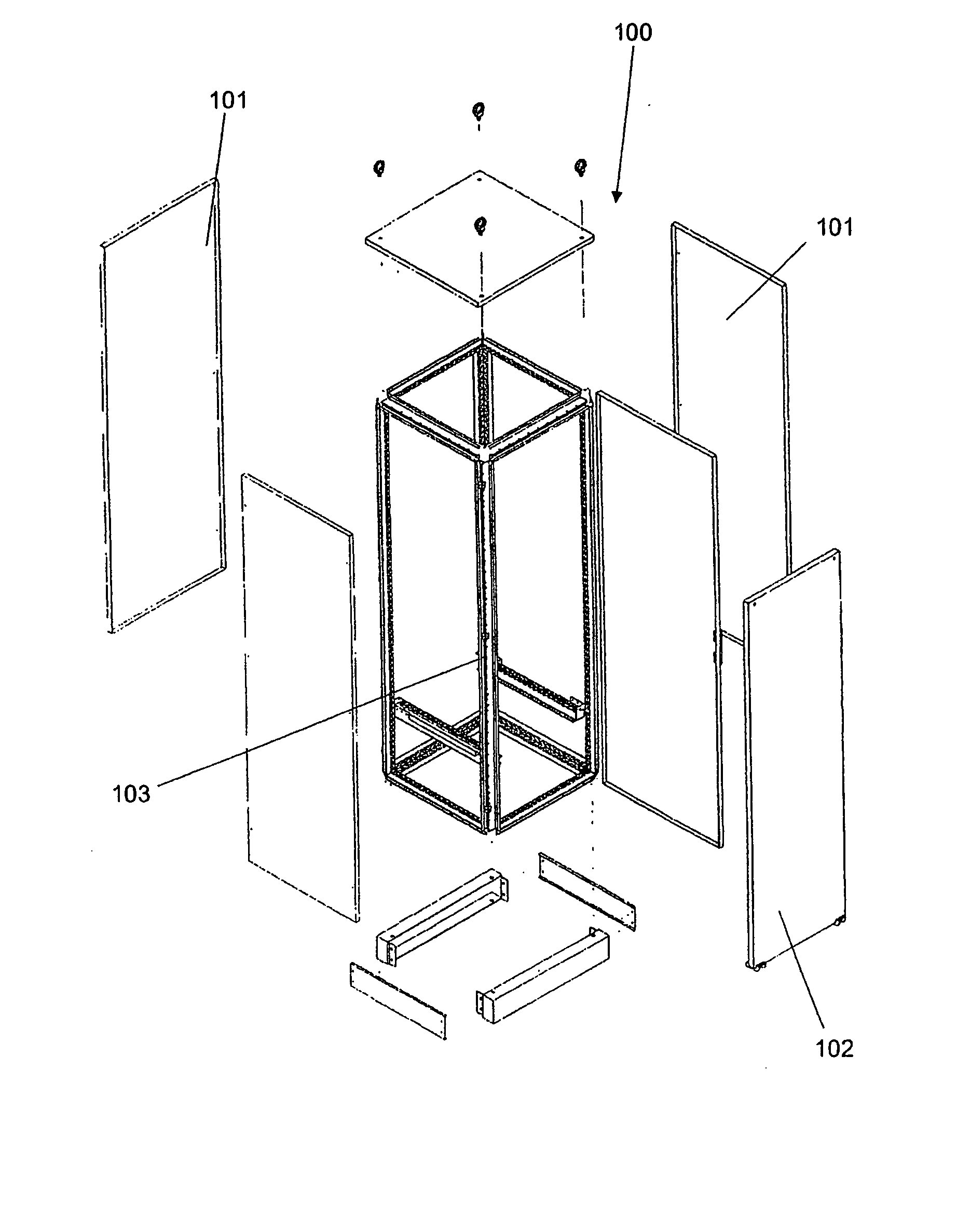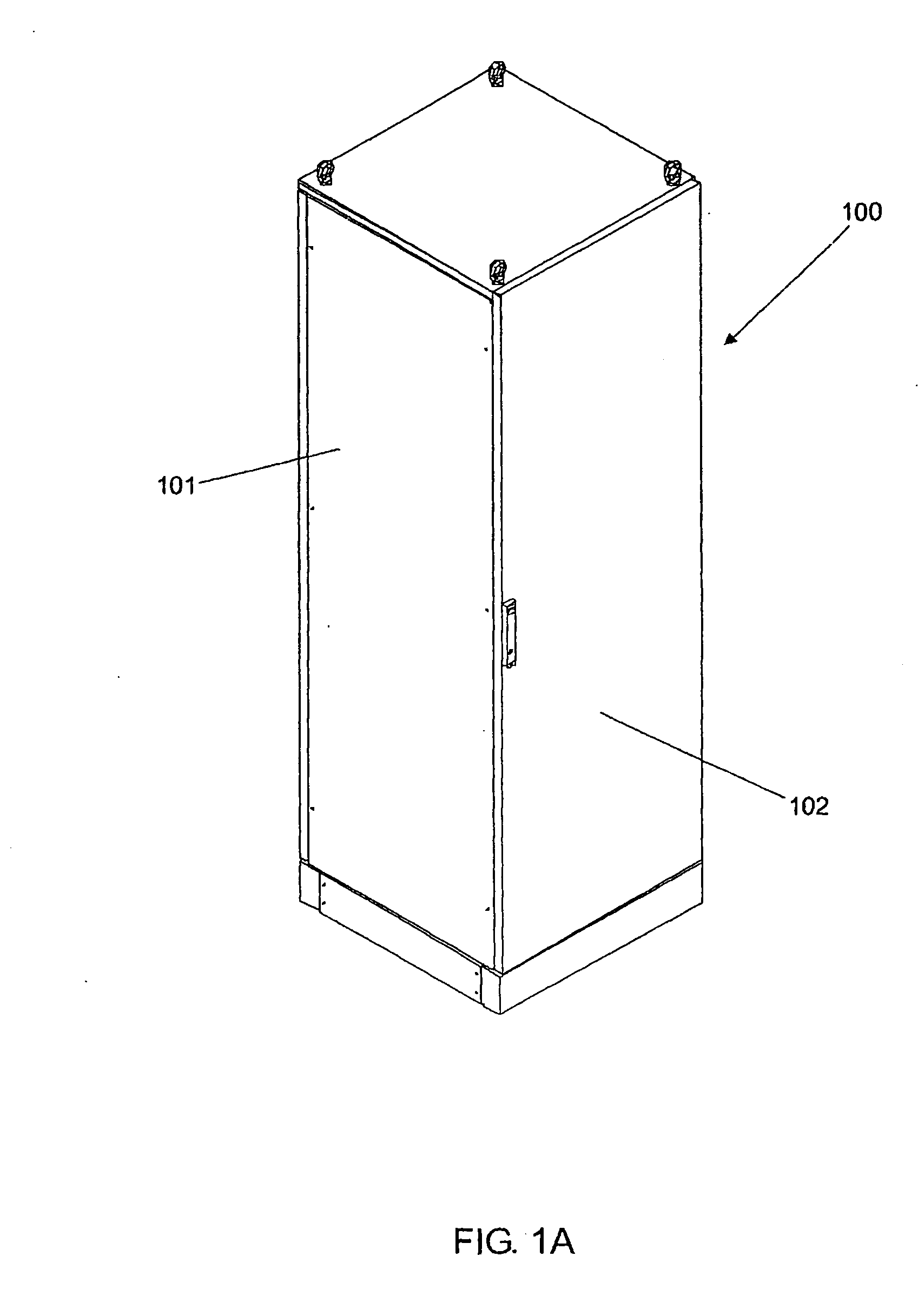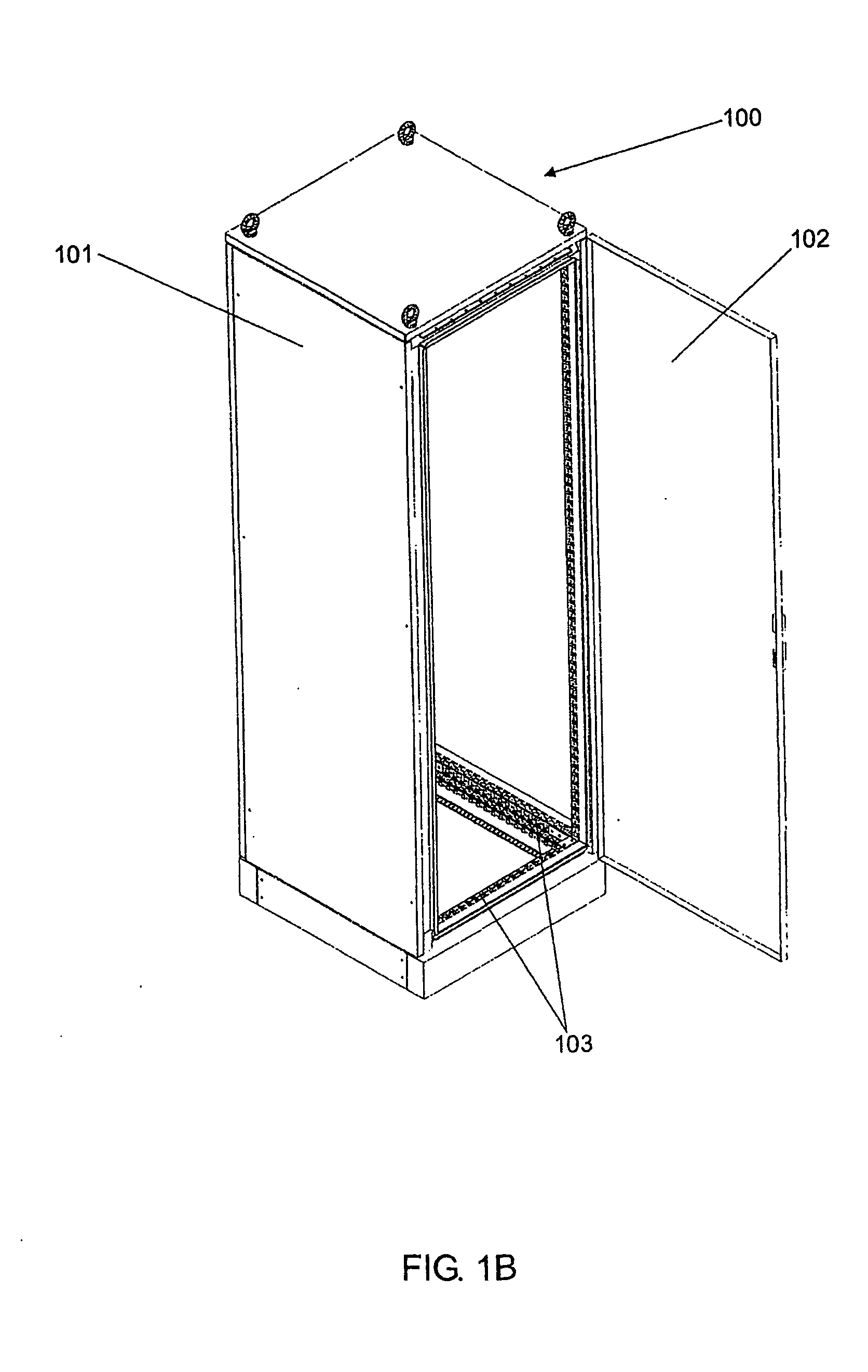Metallic profile for the composition of structures for the assembly of cabinet/enclosures
a technology of structure composition and metal profile, which is applied in the direction of dismountable cabinets, substation/switching arrangement casings, other domestic articles, etc., can solve the problems of complicated industrial workability, technical restrictions, and impede the productive process, and achieve the effect of increasing the mechanic resistance of the profil
- Summary
- Abstract
- Description
- Claims
- Application Information
AI Technical Summary
Benefits of technology
Problems solved by technology
Method used
Image
Examples
first preferred embodiment
[0058]FIG. 16A exhibits the first preferred embodiment for the profile in question, maintaining practically the same transversal geometry although in this case it is characterized by the fact that its rim (15a) is formed at the exact point defined by the vertex (107), in a coplanar position in relation to the wall 107b and perpendicular to the wall (107a).
second preferred embodiment
[0059]FIG. 16B exhibits the second preferred embodiment for the profile in question, maintaining practically the same transversal geometry although in this case it is characterized by the fact that its rim (111), formed by two walls (110), has its end or free edge perpendicularly folded outwards (113a). In this case, if this profile is positioned at the bottom or top of the cabinet / enclosure, the aforementioned rim or end (113a) forms a square like a frame to support the bottom or top of the cabinet / enclosure, thus eliminating the use of complements to fix and support such parts of the cabinet / enclosure, whereas when this is necessary, said rim would also provide conditions for the configuration of a complementary compartment at the bottom or top of the cabinet / enclosure.
third preferred embodiment
[0060]FIG. 16C exhibits the third preferred embodiment for the profile in question, maintaining practically the same transversal geometry illustrated in FIG. 16B, although in this case it is characterized by the fact that its end (112a) is perpendicularly folded outwards like the end (113a), so that this end (112a) can cater to other assembly situations of some sealing components and others located outside the cabinet / enclosure.
PUM
 Login to View More
Login to View More Abstract
Description
Claims
Application Information
 Login to View More
Login to View More - R&D
- Intellectual Property
- Life Sciences
- Materials
- Tech Scout
- Unparalleled Data Quality
- Higher Quality Content
- 60% Fewer Hallucinations
Browse by: Latest US Patents, China's latest patents, Technical Efficacy Thesaurus, Application Domain, Technology Topic, Popular Technical Reports.
© 2025 PatSnap. All rights reserved.Legal|Privacy policy|Modern Slavery Act Transparency Statement|Sitemap|About US| Contact US: help@patsnap.com



